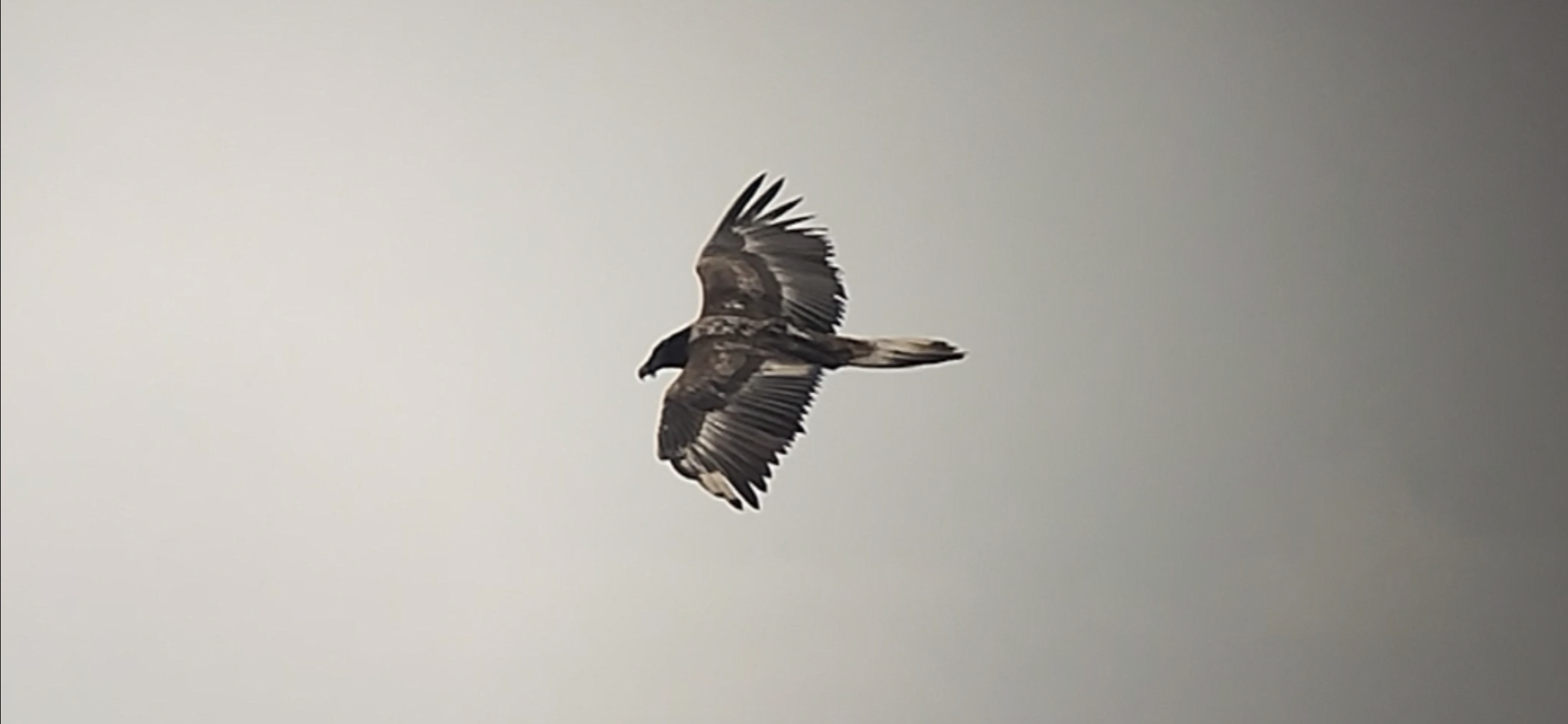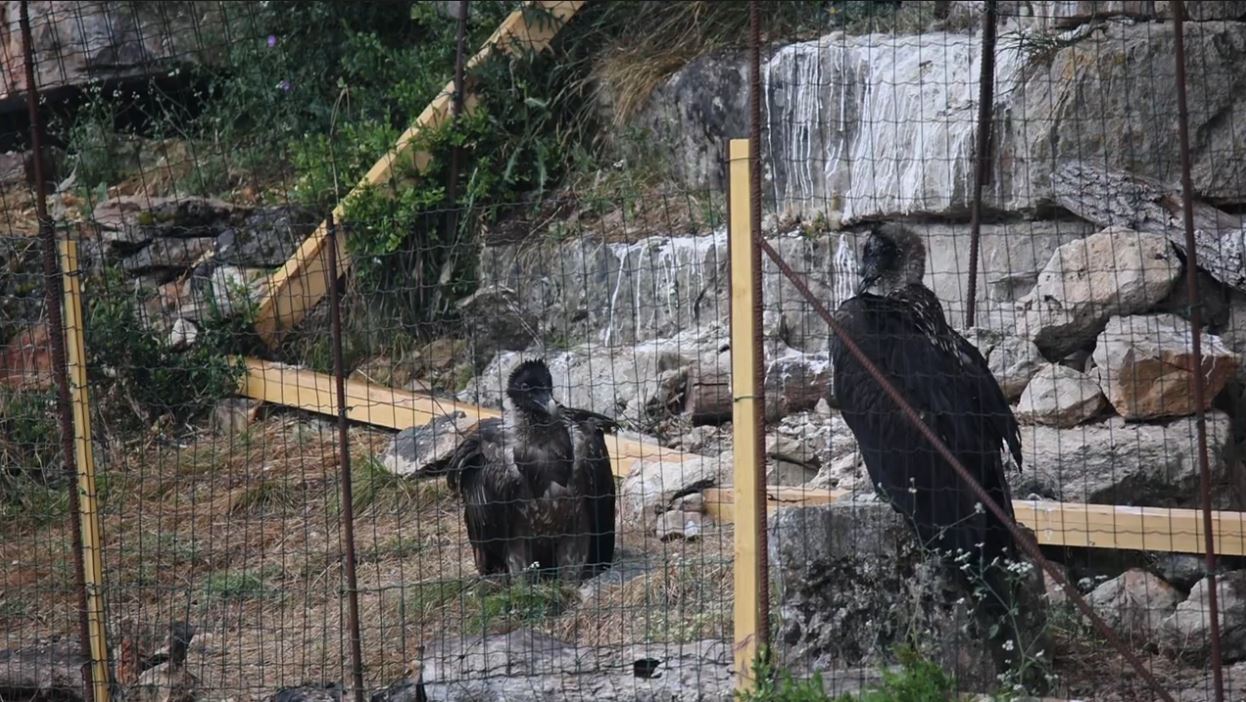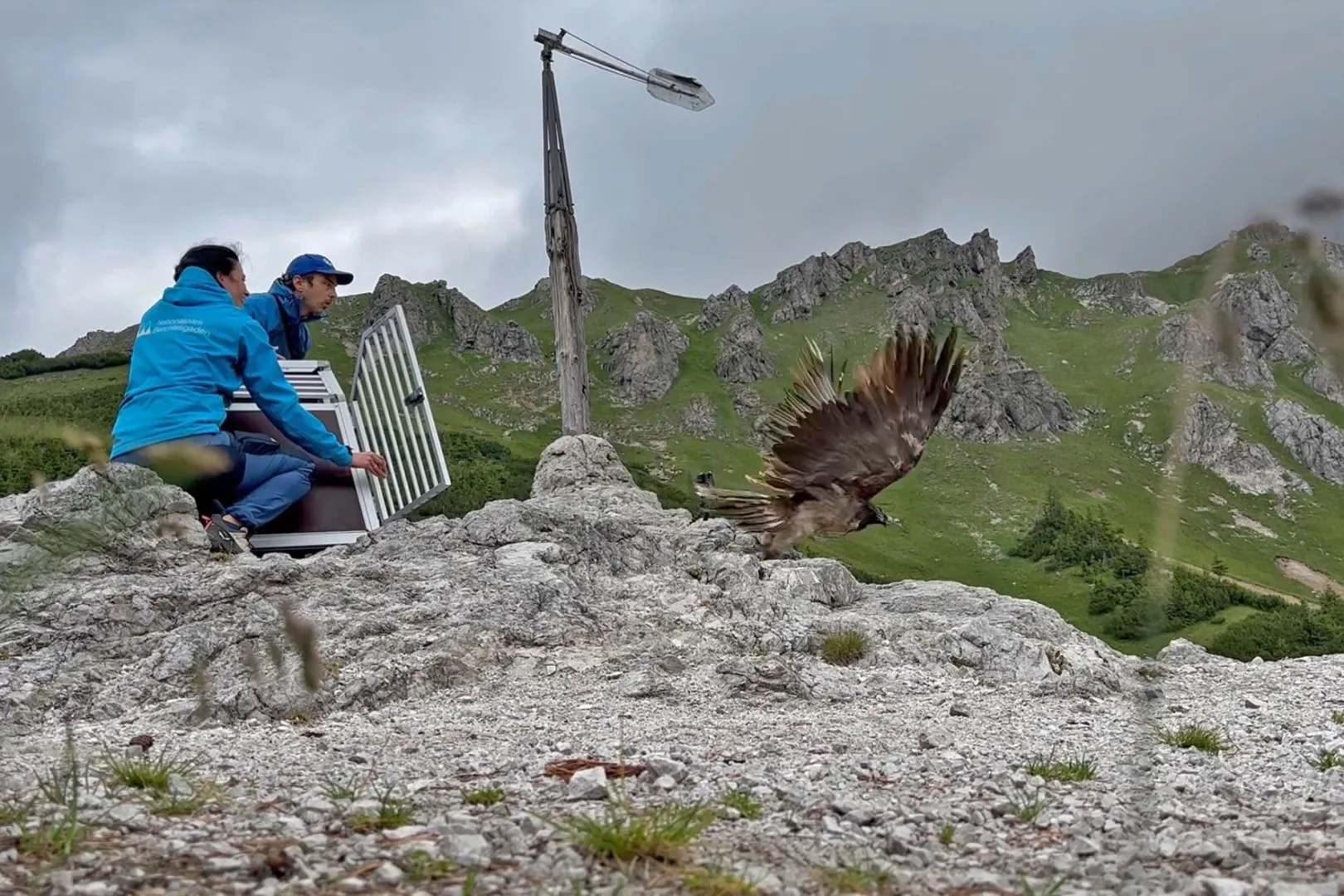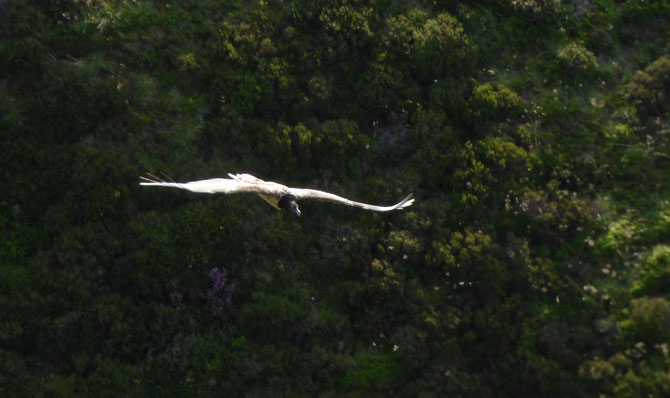
It is not unknown for young Bearded Vultures to leave their mountainous habitats to travel vast distances and visit unusual corners of Europe, but one individual has become quite the celebrity in 2020. At the end of June, a Bearded Vulture was photographed near Kenilworth, England, and seemed to be heading north. Birdwatchers have been following its trail ever since to get a glimpse of this rare species that visited the UK for the second time in recent history. The Bearded Vulture, named “Vigo” by local conservation organizations, explored and toured the English Midlands, before settling in the Peak District National Park where it spent the summer. After nearly three months in the region, Vigo left Crowden on Friday, 18 September, and was spotted the following day in Lathkill Dale and then near Leicester on Sunday, flying high and travelling south-east! On Monday Vigo was seen to the west of Oxford, again heading south-east at high altitude. Where is the Bearded Vulture going to next?
Where is Vigo going to next?
The Vulture Conservation Foundation (VCF) coordinates the Bearded Vulture captive breeding network in Europe (EEP) that breeds the species in captivity to support reintroduction or restocking projects across Europe. All released birds in the reintroduction projects managed by the VCF are ringed, equipped with a tracking tag and some of their feathers are bleached to identify them in flight, which should still be visible at this age. So, as this bird does not have any ring, tag or markings, it is a wild-hatched bird coming from the Alps or the Pyrenees.
So, now that the Bearded Vulture is heading south, it may attempt to return to the Alps or the Pyrenees. To do that, it would need to cross the English Channel again, which is a potentially hazardous journey. If Vigo did not cross the sea on Monday, 21 September, when northerly winds might have provided some tailwind assistance, then it could still be in southern England until the current southerly winds (unfavourable for crossing the sea) subside towards the end of the week. Along the way, it would need to find enough food as well as avoid the different threats that are sometimes more numerous in lowland areas, such as collisions with power lines, or poison baits put illegally to control foxes, or even lead from dead and discarded game shot with lead ammunition. It is not unusual for these long-distance travellers to be found weakened due to lack of food, and having to be rescued, rehabilitated and re-released in more suitable habitat. We kindly ask anyone who comes across the Bearded Vulture and manages to observe its behaviour or take photos to get in touch with us at ibm@4vultures.org to help us monitor Vigo’s progress and state of health. You can also submit previous observations of Vigo here to assist the coordinated Europe-wide monitoring database used to estimate population size, demographic rates, and movements of Bearded Vultures. An intervention will only be required if the bird is grounded (unable to fly) due to weakness, injury, or other cause and requires rescue, treatment and rehabilitation for eventual re-release in a suitable location. The VCF already put a plan into place in cooperation with local and national organizations to act if necessary to ensure the welfare of the bird.
28/09/2020: Update of the whereabouts of “Vigo”
“Vigo” the Bearded Vulture has been seen in the UK again, this time in Norfolk, 225 km north-east from the last confirmed sighting in Oxfordshire on Monday 21st September! At 14:00 today, the sighting between Fakenham and Dereham was posted on twitter by James Lowen and also appeared on BirdGuides.com. It is surprising that the bird has not been reported in the last week, and it is quite unexpected for it to turn up in this part of Norfolk, which isn’t “typical” Bearded Vulture habitat, consisting mainly of arable farmland. Hopefully the bird has managed to find food in the last week and will continue to do so. While we were hoping that it might have crossed the English Channel to return to the Alps or Pyrenees, it is good to know that the bird is alive and well. We will continue to monitor the whereabouts and condition of the bird with the help of the many birders and vulture enthusiasts in the UK!
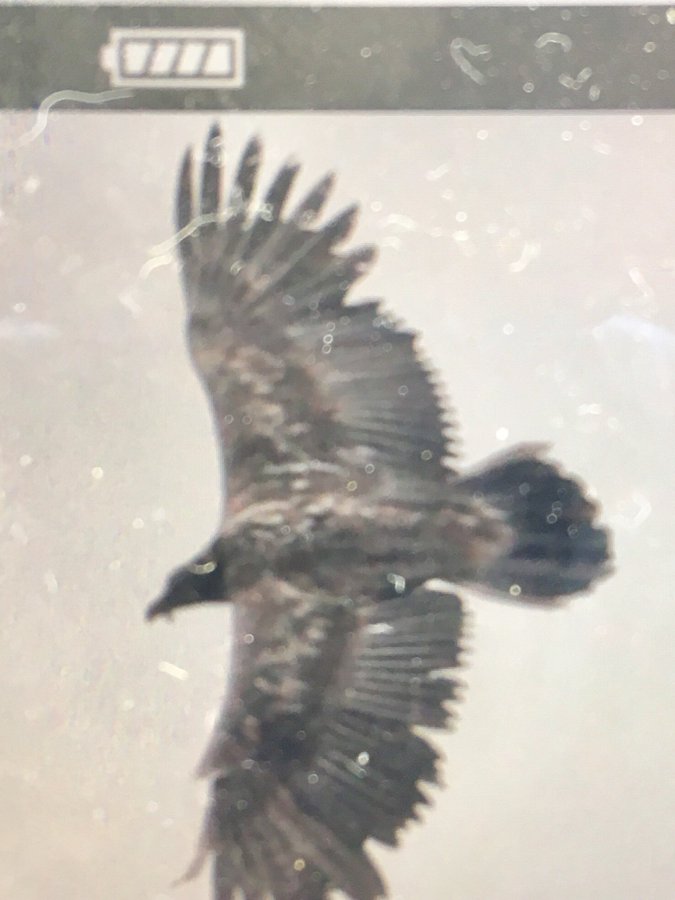
Why there was no need for intervention
We have been closely monitoring the progress and development of Vigo and have been answering several questions such as why the vulture visited the UK and whether there was a need for repatriation. However, there are still some clarifications we would like to make.
‘Why isn’t anyone feeding it?’
There appeared to be a plentiful supply of sheep and hare carcasses in the Peak District to support Vigo for the duration of its stay. There was no need to provide supplementary food as Vigo was behaving normally and was regularly observed feeding, able to find enough food to store, or “cache”, a supply of bones for the future.
‘Why don’t we release another Bearded Vulture so that they can breed?’
There are no historical records of Bearded Vultures breeding in the UK, so, according to the IUCN guidelines, there is no basis for translocating the species there: that would be an introduction of a non-native species, not a reintroduction for conservation purposes. The VCF and its partners are still working to restore the Bearded Vulture throughout its former range in Europe, with release sites carefully prioritized based on extensive feasibility studies. The UK is not included because it is outside the historical range of the species. However, the presence of this bird in the UK reflects the great successes in the Alps and Pyrenees so far, with enough young birds in the population for several individuals to perform these unusual long-distance movements to northern Europe, and, now, for one or two to make it to the UK. It also highlights the need and success of having well-managed natural habitats across Europe, which can be used by migratory or dispersing species as stepping stones in their trip. In that sense, the work done in the Peak District National Park should be celebrated.
Other vulture species also wander extensively outside their natural habitats, such as Cinereous Vulture “Brinzola” that travelled from Spain to Norway, before being badly injured in a collision with a cable at a wind farm. Similarly, Griffon Vultures are travelling to northern Europe more often and in larger groups, so perhaps it will not be long before another vulture species crosses the Channel!
Thank you all for your interest in the Bearded Vulture and vulture conservation work across Europe, and thank you to all the local conservationists who kept an eye on Vigo while he was in the Peak District. What a summer this has been!
Please share this blog post on Facebook, Twitter, LinkedIn or via email help raise awareness so that birders who come across Vigo get in touch with us, allowing to monitor the situation and take action if it is necessary to intervene.
